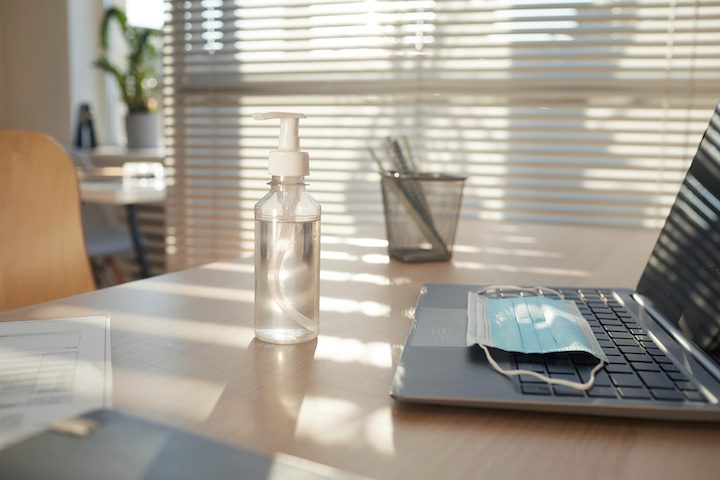With vaccine distribution in full swing, many companies and employees are looking forward to some sort of return to a post-COVID office. While remote work has gained a foothold, zoom fatigue and worker isolation are setting in. A combination of both worlds will likely be the solution.

Great Place to Work’s survey of 79 executives from 56 Fortune 500 companies offers some interesting stats on how the office footprint may change – and it appears spaces will be shrinking.
- The vast majority (86%) of respondents anticipate no geographic change to the location of their office.
- Over half (58%) anticipate reducing their office space by at least 10% from pre-COVID needs.
- Over one-third expect their office space to reduce by 25%.
- 58% of Fortune 500 executives surveyed anticipate reducing their office space from pre-COVID levels.
Challenges of remote working
Remote work has limitations. While some office tasks can be handled effectively remotely, some are better executed in person. A McKinsey Global Institute report analyzing 2,000 tasks across 800 occupations in eight focus countries found that 20 to 25 percent of the workforce in advanced economies can accommodate working from home three to five days per week without a loss of production. However, tasks such as “negotiations, critical business decisions, brainstorming sessions, providing sensitive feedback, and onboarding new employees are examples of activities that may lose some effectiveness when done remotely,” the report says.
Individual needs and concerns
Health and safety will be company and building managers’ top priorities when navigating the return to the office. This also means employers will have to take employee mental health into account, as many have experienced the pandemic differently and have needs and concerns that should be catered to each individual. PwC’s Returning to the workplace after COVID-19: What boards should be thinking about report offers some excellent insight.
Without employee buy-in, even the best-crafted plans are likely to run into trouble. Management teams should lead with empathy and demonstrate an understanding that while all of their employees have experienced this crisis, they haven’t all experienced it the same way. Some employees may have conditions that increase their risk of serious COVID-19 infection and may be reluctant to return to the office. Others may be eager to leave remote work behind, but have caregiving responsibilities that make it difficult or impossible for them to do so. Sensitivity to this reality is a must.
Building managers and employers will need to clearly demonstrate to employees and tenants that the office is a safe place to come back. As John Macomber, Senior Lecturer in the Finance unit at Harvard Business School states in the school’s COVID Killed the Traditional Workplace. What Should Companies Do Now? article,
“…we expect landlords, cruise operators, universities, and more to expand the visible posting in real time of the Health Performance Indicators (HPIs) they collect. They will try to demonstrate that their buildings are safer than someone else’s space, especially as landlords compete for office tenants. We see this already in posted statistics like positivity rates; in widespread sharing of air quality sensor data like carbon dioxide and particulates; and in crowing about building settings like “30 CFM outside air per person per hour.”


